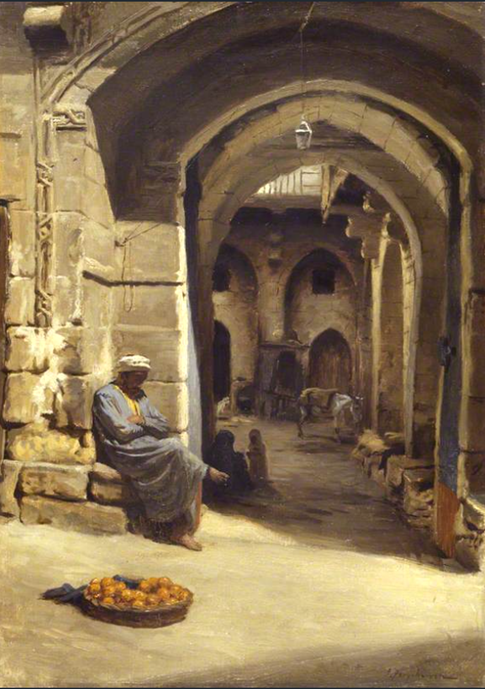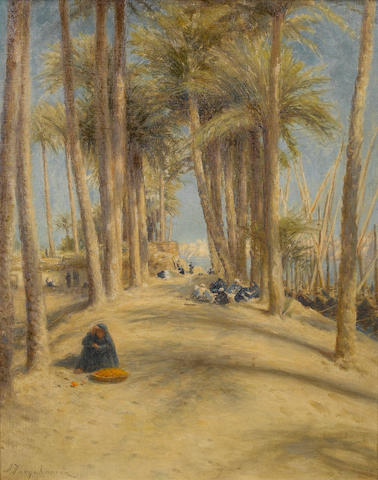
Joseph Farquharson RA – my daily art display
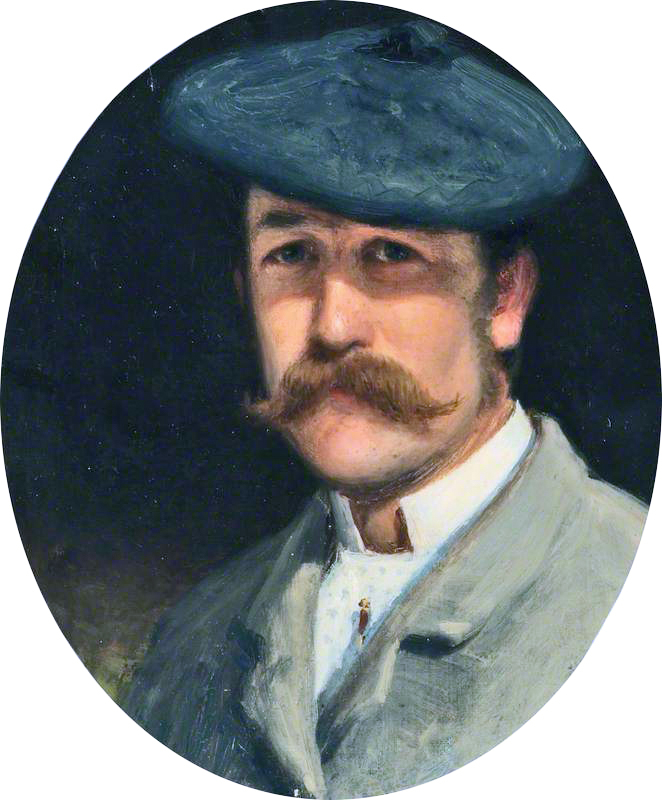
Self Portrait (1882)
We are approaching a time when we have to expect very cold weather and for some of us the oncoming of snow. So as we are at the beginning of the Christmas month I thought I would treat you to some snowy scenes by one of the greatest exponent of such panoramas. Permit me to introduce the nineteenth century Scottish painter, Joseph Farquharson, whose snowy winter landscape paintings were featured on many Christmas cards.
Joseph Farquharson was born in Edinburgh on May 4th 1846. He was the son of Francis Farquharson, a doctor and laird of Finzean in Kincardineshire. Joseph’s brother Robert was a highly respected physician and local Member of Parliament. Joseph’s mother, Alison Mary Ainslie, was a celebrated beauty, one of the daughters of the lawyer Robert Ainslie, who was a close friend of the poet Robert Burns.

Road to Loch Maree by Joseph Farquharson
Joseph’s early days were spent in his father’s house in Northumberland Street Edinburgh, below the Queen Street Gardens. Later the family moved to Edinburgh’s Eaton Terrace and finally to the family estate at Finzean, in Aberdeenshire. Joseph was brought up in a strict family environment and was educated in Edinburgh. Although his father encouraged him to sketch and paint and even let him use his own set of paints, he only allowed his son to paint on Saturdays. Joseph developed his artistic skills and at the age of twelve, Francis Farquharson bought his son his first set of paints and a year later Joseph exhibited his first painting at the Royal Scottish Academy.
Joseph Farquharson’s first formal art training came in the 1860’s when he enrolled at the Trustees’ Academy in Edinburgh, the forerunner of the Edinburgh School of Art where his tutors included the landscape painter, Peter Graham R.A. who would be a constant influence on Farquharson and Graham’s style can be seen in many of Joseph’s works. Joseph then spent time at the Life School of the Royal Scottish Academy.
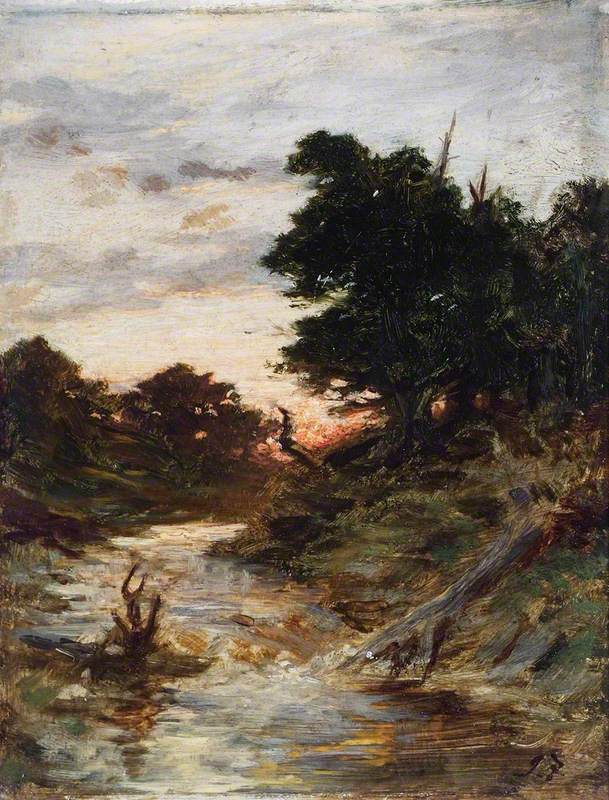
Day’s Dying Glow by Joseph Farquharson (1873)
Joseph Farquharson’s first exhibit at the Royal Academy, was in 1873 when his 1873 painting, Day’s Dying Glow, was on display.
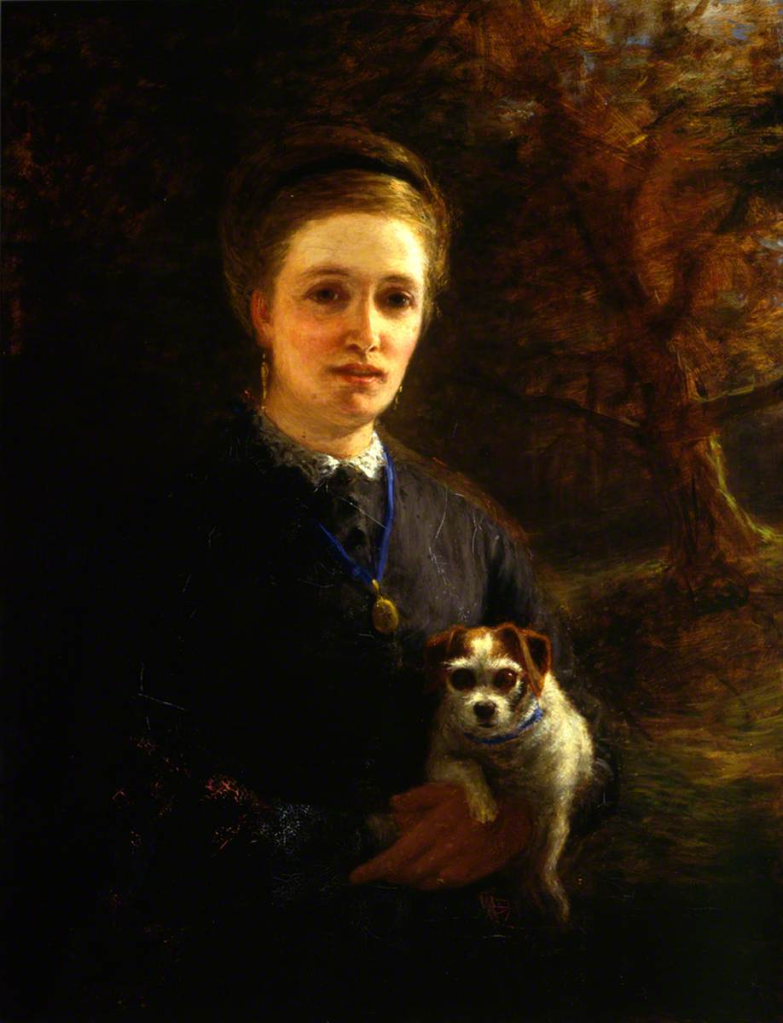
Mrs Farquharson of Finzean (the artist’s stepmother) by Joseph Farquhardson (1871)
Farquharson followed the trend of other leading Scottish artists and concentrated on exhibiting his work in London rather than Edinburgh and Glasgow, as this was where the opportunity to sell their work was the greatest. Besides his Scottish landscape scenes, Joseph was also a a talented portrait painter and his first portrait to be exhibited was of his stepmother, Mary Ann Girdwood Farquharson, which he completed in 1871.
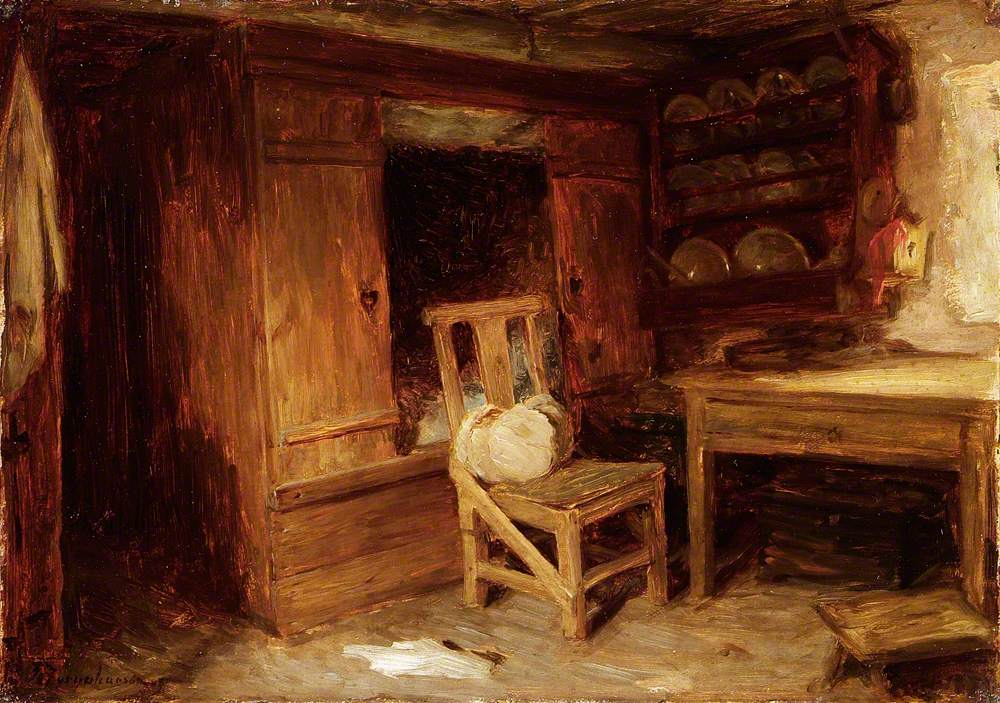
A Scottish Interior, the Box Bed by Joseph Farquharson (c.1874)
Joseph Farquharson produced a realist genre painting around 1874 entitled A Scottish Interior, the Box Bed which depicts a bed inside a cupboard and table and chair in a kitchen/bedroom/living room. The free-standing box or press bed developed into a very sophisticated piece of furniture, when cabinet-makers designed “secret” press beds disguised as wardrobes or sideboards, or hidden behind rows of bookshelves and drawers, even when there was no pressure on space, and no need to provide a mini-bedroom within a shared living area.
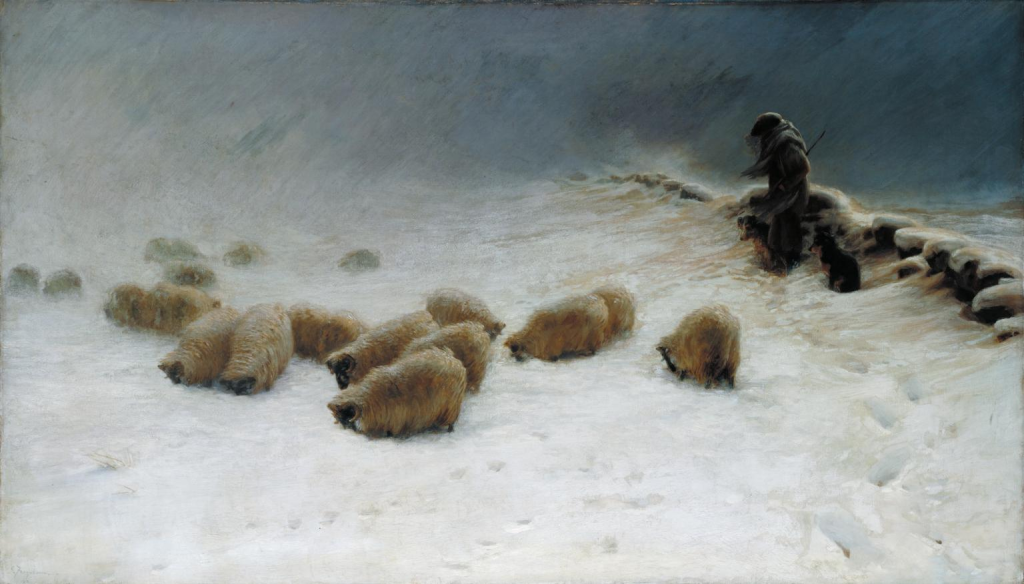
The Joyless Winter’s Day by Joseph Farquharson (1883)
However, Joseph Farquharson will be remembered for his bleak wintry landscapes often depicting sheep and the shepherd. One such painting can be seen in London’s Tate Britain, entitled The Joyless Winter’s Day which he completed in 1883. Despite blizzard conditions, Farquharson painted this en plein air although, he was in the relative comfort of his specially constructed mobile painting hut, which had the added benefit of a stove. This relative comfort enabled Farquharson to capture the remarkably realistic effects of a snow storm. Before you worry about the health of the sheep I have to tell you that those you see were made in plaster by a local sculptor
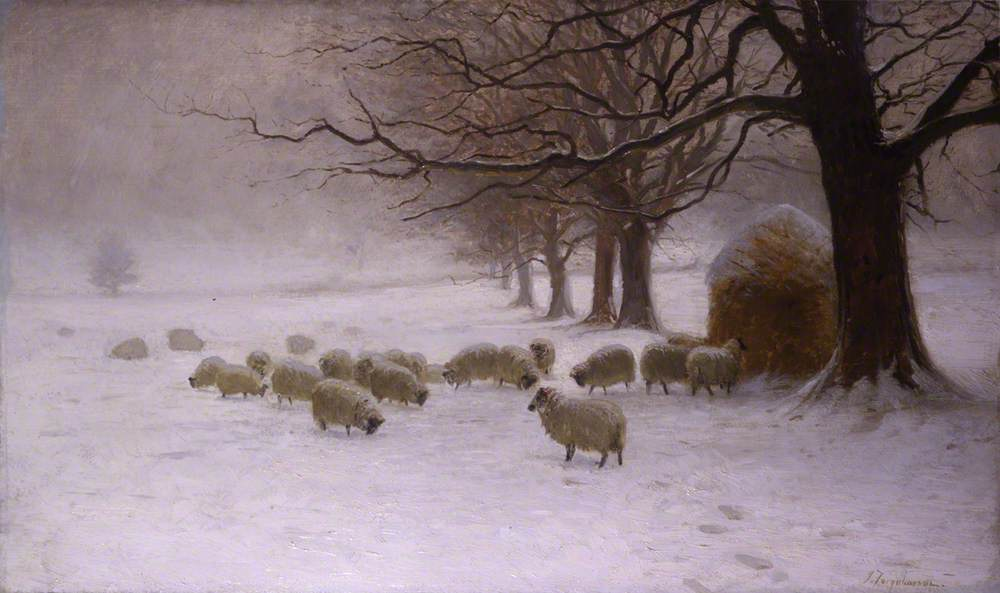
Sheep in a Snowstorm by Joseph Farquharson
Farquharson was famed for his Scottish snow scenes, and with the exception of 1914, he had a new painting exhibited at the Royal Academy every year between 1894 and 1925. . Farquharson combined a career as an artist with his inheritied responsibility as laird of the Finzean estate in Aberdeenshire, where many of his landscapes were painted.
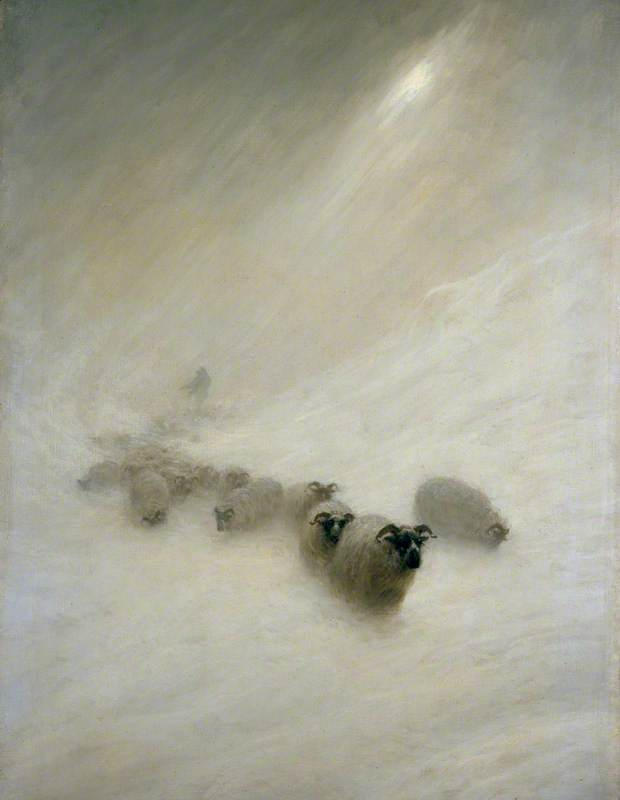
The Stormy Blast by Joseph Farquharson (1898)
But it was not just about snow and blizzards.
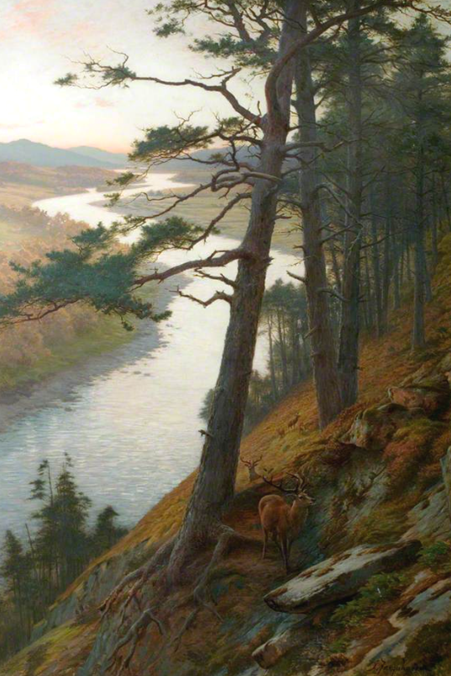
The Winding Dee by Joseph Farquharson (1889)
Some of his landscape paintings depicted the beauty of the Highlands, such as his 1889 painting featuring the River Dee, which rises in the Cairngorms and flows through southern Aberdeenshire to reach the North Sea at Aberdeen.
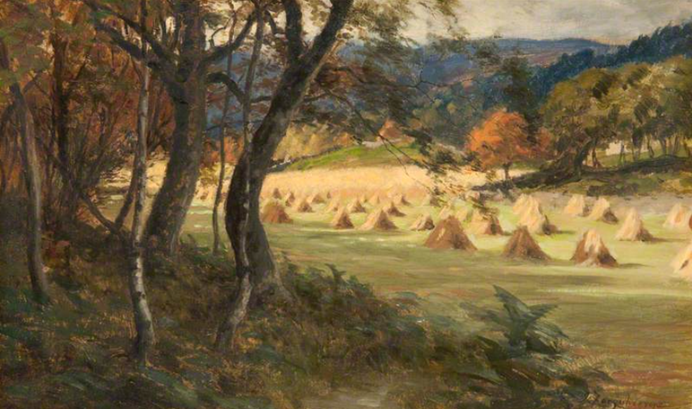
Corn Stooks by Joseph Farquharson (1880)
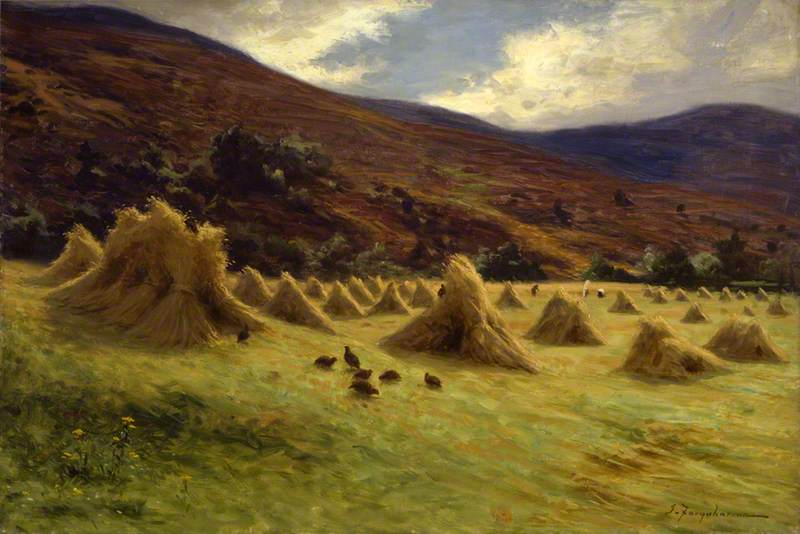
Harvesting, Forest of Birse, Aberdeenshire (1900)
Some of his paintings depicted the agricultural times in rural communities during the summer months.
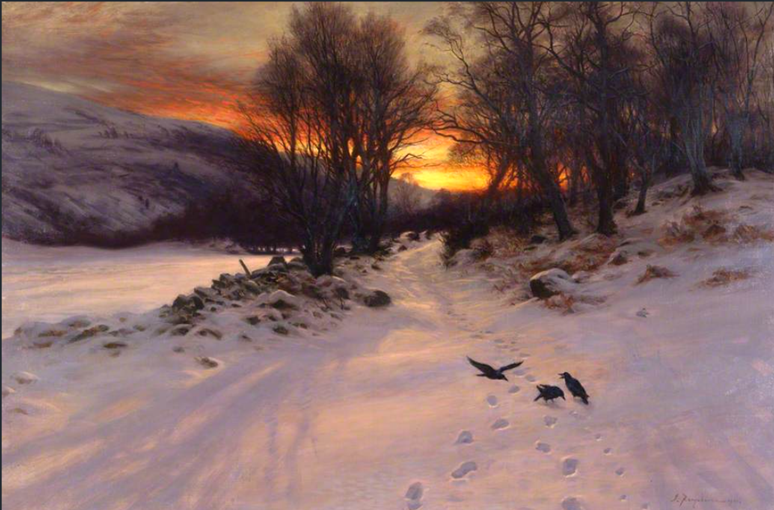
When the West with Evening Glows by Joseph Farquharson (1901)
One of Farquharson’s greatest skills was his ability to depict scenes at sunrise and sunset as this can be seen in his beautiful 1901 painting entitled When the West with Evening Glows. It is a snowy winter landscape, and we look along a snow-covered path, which runs through fields, with groups of trees on either side, as seen in the mid ground of the painting. In foreground we see freshly-made footprints in the deep snow, with three crows having landed close to the footprints. The whole scene is illuminated by the warm glow of the rising sun from behind the hills in the background.
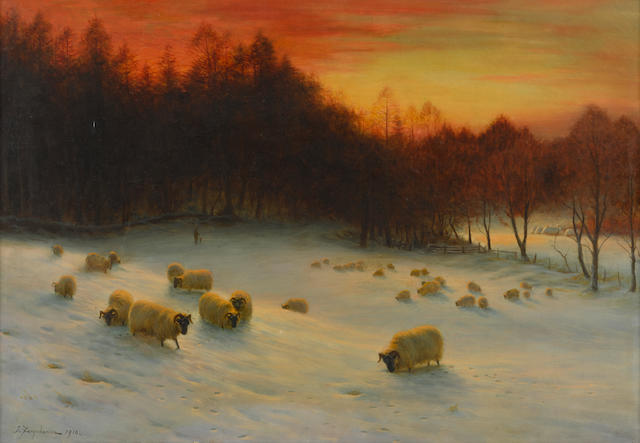
When the West with Evening Glows by Joseph Farquharson (1910)
The above 1910 painting is a slightly smaller version of the work which is owned by the Royal Academy. This version was exhibited at the Royal Academy in 1910 and now hangs in the collection of the Bristol Museum & Art Gallery. This painting was a commission Farquharson received from one of his patrons, who failed in his bid to buy the larger original version. Farquharson often copied his own paintings in order to satisfy his clients’ requests, or to provide an original for engravers tasked with the reproduction of a successful composition. It was such a popular painting with the public that thousands of prints of this work were sold. In his 1913 essay in the Christmas edition of the Art Annual, The Art of Joseph Farquharson, A.R.A, Archdeacon William Macdonald wrote about these popular works:
“…There is not one of Farquharson’s pastoral landscapes which is not treated from the contemplative or poetic point of view: the poetry of snow either in its suggestion of desolation, or of the endurance of peasantry life, or the exquisite beauty of rare tints in the sun or moon on deep snow surfaces and seen through leafless trees… and the varied voices with which Nature elevates us from the prosaic, the commonplace and the ugly in her countless moods…”

Market on the Nile by Joseph Farquharson (1893)
The Orange Seller by Joseph Farquharson (1893)
For the first four years of the 1880’s Farquharson spent the winters in Paris and studied with Carolus-Duran who installed in the minds of his students the importance of using the brush straight away and to think in terms of form and colour. In 1885 Farquharson went to North Africa. Among the works created during the subsequent 8 years were The Egyptian and On the Banks of the Nile opposite Cairo
On the Banks of the Nile opposite Cairo by Joseph Farquharson
Joseph Farquharson was elected Associate of the Royal Academy in July 1900, Royal Academician in February 1915 and finally, Senior Royal Academician in 1922.

Beneath the Snow Encumbered Branches by Joseph Farquharson (1901)
In addition to exhibiting over 200 works at the Royal Academy he showed seventy-three at the Royal Society of Arts and one hundred and eighty-one at the Fine Art Society. He also exhibited at the Royal College of Art and Tate Britain. The renowned artist-critic, Walter Sickert made Farquharson the subject of an essay comparing him favourably with Gustave Courbet. In it he extolled Farquharson’s tension and realism and criticized the pretension of his polar opposites, the Bloomsbury Group, who he wrote “fortunately does not run in the North of Scotland”. The remarkable realism of Farquharson’s work can be attributed to his desire to work en plein air. Farquharson painted so many scenes of cattle and sheep in snow he was nicknamed ‘Frozen Mutton Farquharson’
Farquharson inherited the title of Laird in 1918 after the death of his elder brother Robert. Joseph Farquharson died on April 15th 1935, three weeks before his eighty-ninth birthday..

